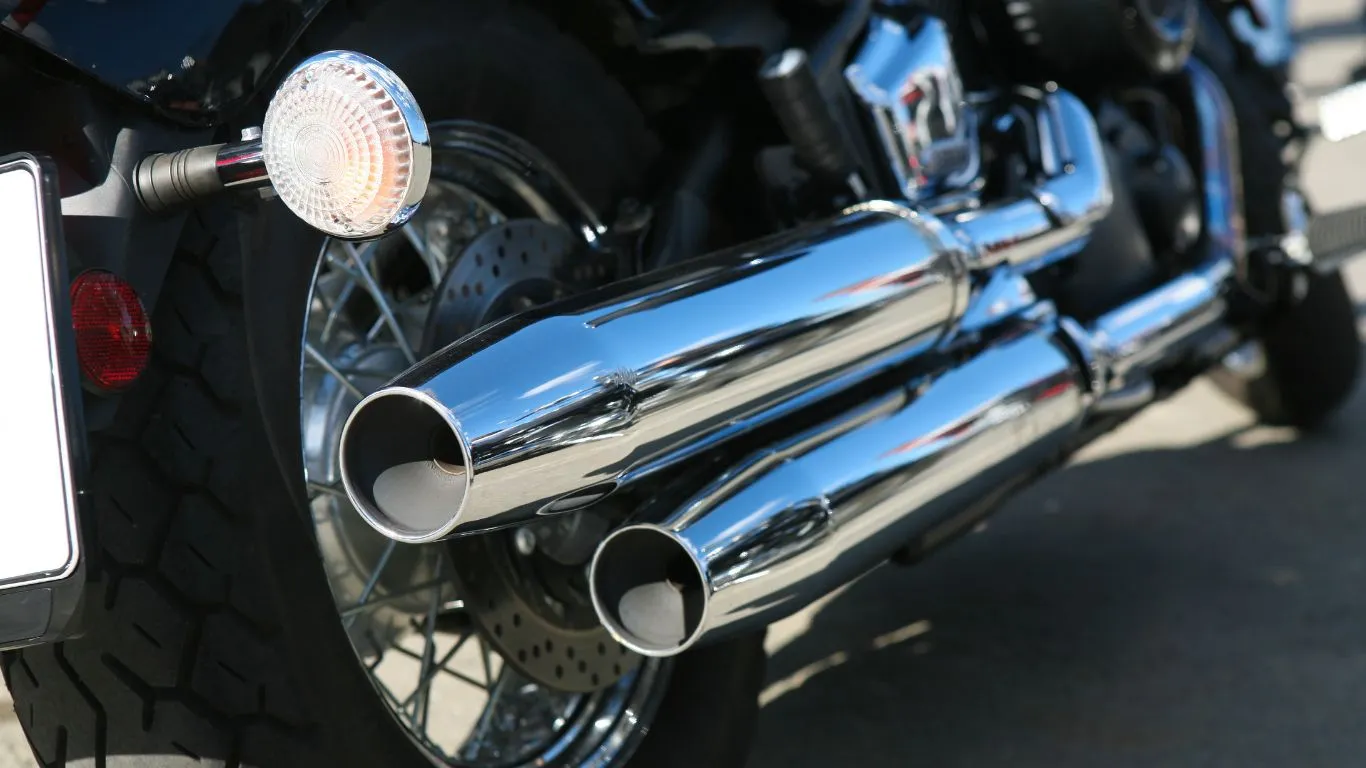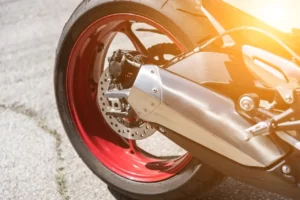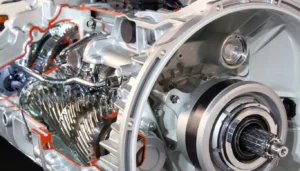There are several reasons why someone might want to make their motorcycle exhaust louder. Not only can it enhance the auditory experience of riding, but it can also serve a practical purpose.
“Loud pipes save lives.” This phrase is often echoed in the motorcycle community. The logic behind it is simple: the louder your motorcycle, the more likely it is that other drivers on the road will hear you coming and be aware of your presence.
Security isn’t enough. The exhaust’s quiet sound pleases riders. Imagine the deep, resonant rumble as you rev the engine, the exhilarating roar as you accelerate, and the intoxicating power and freedom that surges with each throttle twist. Imagine hearing your motorcycle’s exhaust notes change with the throttle.
Riders like the exhaust’s power. Each engine rev and acceleration sends a rumbling tremor through your body, announcing your presence on the road. Motorcycles need noise.
It’s about revving the engine, accelerating, and feeling powerful and free with every throttle twist.
Reasons to make your motorcycle exhaust louder:
- Safety: Your motorcycle’s amplified sound stands out in traffic. It cuts through urban noise and makes you visible in densely populated or heavily trafficked areas.
- Performance: A louder exhaust can indicate a more efficient and powerful engine. Performance enthusiasts often modify their exhaust systems to increase horsepower and torque.
- Aesthetics: The sound of a motorcycle is part of its character. A louder exhaust can enhance the auditory experience of riding and give your bike a more aggressive, sporty profile.
Consider these factors when deciding whether to make your motorcycle exhaust louder. It’s a decision that should be made carefully, as the increased volume can also increase your responsibilities as a rider.
Legal Considerations for a Louder Exhaust
First and foremost, increasing your motorcycle exhaust volume requires more than changing a few parts. Regional and jurisdictional laws apply. Research these before making changes.
An important note. Making your motorcycle exhaust louder isn’t always the best choice. Consider legal, safety, and environmental impacts.
The Noise Control Act
The 1972 Noise Control Act is a peculiar US law. This crucial law allows the Environmental Protection Agency to set noise standards, including motorcycle roars. It states:
- Any motorcycle produced after 1985 should not exceed 80 decibels of noise.
- Mufflers are mandatory for all motorcycles to control noise.
- Alterations to increase noise beyond federal or state regulations are prohibited.
State Laws
Legal considerations are also important. State exhaust modification laws vary. Some states are lax, others are strict. Consider California. Amplification of an exhaust system’s sound is illegal under California Vehicle Code Section 27151. Local laws can affect your motorcycle exhaust loudening plans.
| State | Noise Restrictions |
|---|---|
| California | Prohibits modifications that increase noise beyond the factory model |
| Florida | No specific decibel limit, but prohibits modifications that are “plainly audible” at 25 feet or more |
Before embarking on the journey to amplify your motorcycle’s roar, it’s essential to navigate the labyrinth of your state’s specific laws and regulations. This is a key step that ensures you don’t inadvertently step on the wrong side of the law.
When uncertainty clouds your judgment, do not hesitate to seek counsel from a local mechanic or legal luminary. Their expertise can guide you through the murky waters of legal compliance and technical feasibility.
Note: Always be mindful of the impact of loud exhaust on residential areas and wildlife. Consider the potential disturbance to others and remember, riding is about enjoying the journey, not just making noise.
Types of Motorcycle Exhaust Systems
Before delving into the how-tos of making your motorcycle exhaust louder, a rider must be well-acquainted with the different types of motorcycle exhaust systems. This foundational knowledge will equip you with the essential groundwork to successfully modify your exhaust for a louder, more robust sound.
1. Full System
A full system exhaust is a complete exhaust system starting from the engine’s exhaust port to the end of the tailpipe. This system is often favored by bike enthusiasts due to its potential for significant performance improvements.
2. Slip-On System
The next type, the slip-on exhaust system, is a partial system that only replaces the muffler and mid-pipe section of the bike. The slip-on system is a popular choice for those seeking a balance between performance upgrades and budget.
3. Off-Road System
Dirt bikes and other off-road vehicles that need to maintain high speeds over rough terrain benefit from lightweight, free-flowing off-road systems. These systems are usually louder than on-road ones.
| Type of Exhaust System | Key Characteristic | Suitability |
|---|---|---|
| Full System | Complete exhaust system | Riders seeking significant performance improvements |
| Slip-On System | Partial system, replaces muffler and mid-pipe section | Riders seeking a balance between performance and budget |
| Off-Road System | Lightweight and free-flowing | Riders of dirt bikes and off-road vehicles |
Your bike’s exhaust system is like a symphony’s sweet and sour notes. Understanding these parts and their functions is the only way to modify the exhaust system to boost volume and bike performance.
How to Make Your Stock Exhaust Louder
Do you want a louder motorcycle exhaust? Bikers find their motorcycles’ stock exhausts too quiet. This guide will show you how to make your stock motorcycle exhaust louder using tried-and-true methods.
1. Replacing the Exhaust
One of the most effective ways to increase the volume of your motorcycle’s exhaust is to replace the stock muffler with an aftermarket version designed to be louder. Here are the steps:
- Selection: Choose an aftermarket exhaust that fits your motorcycle’s make and model. Make sure it is designed for a louder sound.
- Removal: Use a socket wrench to unscrew the bolts holding your current exhaust in place, and then carefully remove it.
- Installation: Install the new exhaust in place and securely tighten the bolts.
Remember, always check your local laws and regulations before replacing your exhaust. Some areas have strict noise pollution laws that could result in fines if violated.
2. Installing a Decibel Booster
Another method to make your stock exhaust louder is by installing a decibel booster, which is a small device that can be fitted onto your exhaust pipe to amplify the sound. Here’s how to do it:
- Acquisition: Purchase a decibel booster compatible with your motorcycle’s exhaust diameter.
- Installation: Follow the manufacturer’s instructions to fit the booster onto your exhaust pipe.
3. Removing the Baffles
Motorcycle exhausts have baffles inside them that dampen the noise. By removing these, you can increase the volume of your exhaust. However, this method requires caution as it can affect the performance of your motorcycle.
- Identification: Locate the baffles in your exhaust pipe, which are typically cylindrical and metallic.
- Removal: Use a screwdriver to carefully remove the baffles from your exhaust. Be sure not to damage other parts of the exhaust in the process.
Removing motorcycle baffles has many effects. Enjoy the exhaust growl. Engine performance may drop. Every option has drawbacks. Consider these outcomes.
4. Making Adjustments
There are also some minor adjustments you can make to your motorcycle to change the sound of your exhaust.
| Adjustment | Description |
|---|---|
| Air intake | By increasing the amount of air flowing into your engine, you may achieve a louder exhaust noise. |
| Tuning | Tuning your engine to run at higher RPMs can also increase the volume of your exhaust. |
These methods can boost your motorcycle’s exhaust volume. Before proceeding, consider each method’s implications and legality.
Installing Aftermarket Exhaust for Louder Sound
Motorcyclists love the exhaust’s power and freedom. Some motorcycles don’t growl. Stock exhaust is too quiet. Aftermarket pipes louden motorcycle exhausts. Step-by-step instructions.
1. Select an Aftermarket Exhaust
Before anything else, do some research to determine the best aftermarket exhaust for your motorcycle model. Consider these factors:
- Material: Exhausts are usually made of stainless steel, titanium, or carbon fiber. Stainless steel is the most durable, but titanium and carbon fiber are lighter.
- Design: The design of the exhaust affects the sound. Megaphone exhausts are typically louder than straight pipes.
- Brand: Stick with reputable brands to ensure good quality and performance.
2. Remove the Stock Exhaust
With your new exhaust ready, it’s time to remove the stock one. Be sure to follow your motorcycle’s specific instructions for this process to avoid causing any damage.
3. Install the Aftermarket Exhaust
Installing the new exhaust involves a similar process to removing the old one, but in reverse. Ensure the exhaust is positioned correctly before you begin to tighten any bolts.
4. Test the Sound
With the new exhaust installed, start your motorcycle and listen to the sound. If you’re satisfied with the volume, congratulations! You have successfully made your motorcycle exhaust louder.
Remember, increasing your motorcycle’s exhaust volume can improve performance and aesthetics. To avoid fines, remember local noise ordinances. Safety comes first.
Making the Right Choice: A Comparative Table
| Material | Pros | Cons |
|---|---|---|
| Stainless Steel | Highly durable | Heavier than other materials |
| Titanium | Lighter than stainless steel | Less durable than stainless steel |
| Carbon Fiber | Lightest material | Can be expensive |
A louder exhaust can make your ride more exhilarating, but remember to respect your fellow road users and the environment. Happy riding!
Adding a High-Flow Air Filter
High-flow air filters make motorcycle exhausts louder. This modification increases exhaust volume and engine airflow, improving motorcycle performance. Step-by-step instructions:
Step 1: Purchase a High-Flow Air Filter
First, buy a motorcycle-compatible high-flow air filter. Using the wrong filter can damage your engine. Most auto-parts and online stores sell high-flow air filters. Before buying, read reviews and research brands.
Step 2: Remove the Old Air Filter
Remove the old air filter after installing the new high-flow one. Find your motorcycle’s air box. Depending on your motorcycle, it’s usually near the engine. Open the airbox and carefully remove the old filter. Wear gloves to avoid dirt and debris during this process.
Step 3: Install the New Air Filter
The high-flow air filter is ready. Fit it snugly in the airbox. Close the airbox after positioning. A loose airbox lets debris in, affecting engine performance.
Step 4: Test Your Motorcycle
Finally, truth is revealed. Start your motorbike and listen to the exhaust symphony. Your exhaust should crescendo like a well-conducted orchestra if the air filter is properly positioned.
Start your motorbike and hear the exhaust. The exhaust should increase significantly if the air filter was properly installed.
Safety first should be your mantra. Protect yourself while modifying your motorcycle. Replace parts following the manufacturer’s instructions like a knight obeying his King.
Let’s summarize this process in a tabular form for quick reference:
| Step | Description |
|---|---|
| Step 1 | Purchase a High-Flow Air Filter |
| Step 2 | Remove the Old Air Filter |
| Step 3 | Install the New Air Filter |
| Step 4 | Test Your Motorcycle |
By following these steps, you can effectively make your motorcycle exhaust louder and enjoy a more thrilling ride.
Removing the Baffles for More Sound
Baffles reduce motorcycle exhaust noise. They’re necessary for comfort, but they may muffle your motorcycle’s raw, powerful sound. Removing these baffles can increase exhaust volume. However, doing so could cause backpressure loss.
Steps to Remove Baffles
- Prepare Your Motorcycle: Preparing your motorcycle removes baffles. Stop and cool the bike to avoid injuries. Jack your motorcycle to access the exhaust system.
- Locate the Baffles: The baffles are typically located inside the exhaust pipes. They may look like small metal tubes or pipes that are inserted into the larger exhaust pipe.
- Extract the Baffles: Imagine being a surgeon. Skillfully unscrew exhaust pipe baffles. This task may require a wrench or pliers. Keep freed parts safe. If you reverse the operation, use it as evidence.
Word to the Wise: Removing your motorcycle’s exhaust baffles may cause legal issues. Modifications may violate local laws. Before remodelling your car, double-check these laws.
If you’re not comfortable with the idea of permanently removing your baffles, an alternative method is to drill holes in them. This will still increase the volume of your exhaust, but to a lesser extent and without the potential issues that could arise from complete removal.
Steps to Drill Holes in Baffles
- Measure and Mark: Decide where you want to drill your holes and mark these spots with a marker. A common approach is to drill three or four evenly spaced holes around the circumference of the baffle.
- Drill the Holes: Using a drill and metal drill bit, carefully drill your marked holes. Start with a smaller drill bit and gradually increase its size to avoid damaging the baffle.
- Clean Up: After drilling, there will likely be some metal shavings. Clean these up to avoid any potential damage to your motorcycle.
Imagine your bike roaring off the buildings. Both increase exhaust volume significantly. Power brings responsibility. Careful like a cat on a hot tin roof. Consult a pro before modifying your bike.
Wrapping the Exhaust for a Rumble Effect
Imagine your motorcycle exhaust amplified, turning heads as you drive by. Exhaust wrapping makes this possible at low cost. Wrapping your motorcycle’s exhaust improves performance and sound.
Materials Needed
- Exhaust wrap: This heat-resistant material is specifically designed to withstand the high temperatures of your exhaust pipes.
- Metal ties or hose clamps: These will secure the wrap in place once it has been applied around the exhaust.
- Scissors: A standard pair of scissors will be used to cut the exhaust wrap.
- Gloves: It’s recommended to wear gloves during the process to protect your hands from potential burns.
Step-by-Step Guide
- Prepare the Exhaust: Before you begin, ensure the exhaust is clean and free of any oil or grease. This will help the wrap adhere better.
- Cut the Wrap: Measure and cut the required length of exhaust wrap. A good rule to follow is to cut 50% more wrap than the length of the exhaust pipe to account for overlapping layers.
- Wrap the Exhaust: Start wrapping from the end closest to the engine, ensuring each layer overlaps the previous one by around a quarter of an inch.
- Secure the Wrap: Once you reach the end of the exhaust, secure the wrap with metal ties or hose clamps. Make sure the wrap is tight and secure.
- Allow the Wrap to Set: Start the motorcycle and let it idle for about 15 minutes. The heat will cause the wrap to shrink and set.
Note: While wrapping your exhaust can make it louder, it’s important to remember that there are legal limits to how loud an exhaust can be. Always check local regulations before making modifications to your motorcycle’s exhaust system.
Using a Cat-Back Exhaust System for a Deeper Sound
Adding a cat-back exhaust system can give your motorcycle a more robust and deeper sound. This system is a popular choice among motorbike enthusiasts who want to enhance the auditory aesthetics of their rides.
What is a Cat-Back Exhaust System?
Aftermarket cat-back exhaust systems replace your motorcycle’s exhaust system from the catalytic converter to the exhaust tips. Cat-back means it starts at the catalytic converter and extends back. The rear pipe, resonator, and silencer in this system vary by design.
How Does a Cat-Back Exhaust System Make Your Motorcycle Louder?
Two main ways make the cat-back exhaust louder. First, it reduces exhaust gas backpressure. Reducing this resistance lets the engine expel gases more freely, creating a louder, more aggressive exhaust note.
Second, the silencer is custom-made. This muffler lets more sound out than the factory one. Riders like the throatier, deeper exhaust note.
Steps to Install a Cat-Back Exhaust System
- Remove the old exhaust system: Start by removing the old exhaust system from your motorcycle. This typically involves unbolting it from the catalytic converter and removing any attached hangers.
- Install the new system: Next, attach the new cat-back exhaust system. This will involve bolting it to the catalytic converter, attaching any necessary hangers, and ensuring it’s securely fastened.
- Check for leaks: Once the new system is installed, start your motorcycle and check for any exhaust leaks. If you notice any, tighten the bolts or replace the gaskets as needed.
Note: Installing a cat-back exhaust system is easy for experienced mechanics but difficult for beginners. Hire a mechanic if you’re uncomfortable upgrading.
| Pros | Cons |
|---|---|
| Louder, deeper sound | Can be expensive |
| Improved engine performance | Potentially illegal in some areas due to noise regulations |
| Enhanced aesthetics | Complex installation process |
Overall, installing a cat-back exhaust system can give your motorcycle a louder, more satisfying sound. However, consider your local noise regulations and the cost of the system before deciding to install one.
Using a Slip-On Exhaust for More Volume
Motorcycle exhaust systems are like human voiceboxes. Your ride’s sound announces your presence. What if you want a louder, more commanding motorcycle voice? Slip-on exhausts make this easy.
Slip-on exhausts “slip on” to your motorcycle’s exhaust system. It replaces the silencer, which reduces engine noise.
Benefits of Using a Slip-On Exhaust
- Increased Volume: Motorcycle exhaust volume increases aggression and alerts nearby drivers, improving road safety. Exhaust system changes can boost volume. Loudness may violate local laws.
- Amplifying the Roar: Imagine your motorcycle’s exhaust purring deeper and louder. Swapping your bike’s silencer for a slip-on exhaust can boost its exhaust note.
- Enhanced Performance: Slip-on exhausts improve performance. They also boost horsepower and torque.
- Simplified Installation: Slip-on exhausts are easier to install than full exhaust systems, which require replacing the exhaust line..
Installing a Slip-On Exhaust
Once you have chosen the right slip-on exhaust, the installation process is fairly straightforward. However, if you’re not comfortable doing it yourself, it’s always recommended to take your motorcycle to a professional mechanic.
Tuning Your Motorcycle’s Engine for Louder Exhaust
Engine tuning is a great way to make your motorcycle exhaust louder. If you know what to do, this process isn’t so scary. A louder exhaust starts in your motorcycle’s engine. Let’s start.
Learn the basics before tuning your motorcycle’s engine. Motorcycle noise comes from engine combustion. Air, fuel, and exhaust gas are mixed, ignited, and expelled. This process can boost your motorcycle’s sound.
Note: It’s worth mentioning that making your motorcycle exhaust significantly louder might not be legal in all jurisdictions. Always check local regulations before proceeding.
Steps to Tune Your Motorcycle’s Engine
- Adjust the Air-Fuel Mixture: You can make your exhaust louder by adjusting the air-fuel mixture in your engine. A richer mixture (more fuel, less air) results in a louder and deeper exhaust sound.
- Upgrade Your Exhaust Pipes: Larger diameter pipes can increase the exhaust sound. However, remember that this should be done in balance as too large pipes can cause loss of backpressure and decrease engine performance.
- Change the Exhaust System: Consider installing a high-performance exhaust system designed to make the bike louder. These systems are designed to increase the volume and improve the tone of the exhaust sound.
Final Thoughts on Making Your Motorcycle Exhaust Louder
Motorcycle enthusiasts say the thrill isn’t complete without a powerful exhaust. Many bikers love the exhaust system’s deep, resonating hum. Some models lack this feature. Fortunately, you can make your motorcycle exhaust louder.






